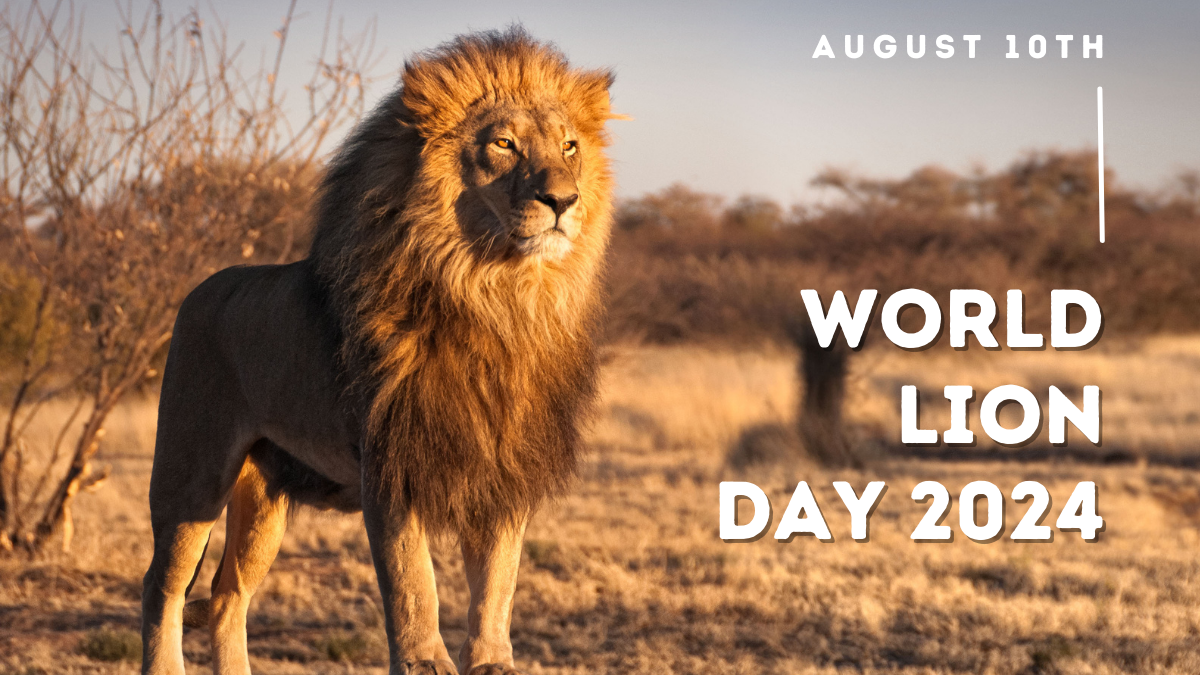World Lion Day, celebrated annually on August 10th, marks a crucial moment in wildlife conservation efforts. As we approach the 2024 edition, the urgency to protect these majestic creatures has never been more pressing. Lions, scientifically known as Panthera leo, are not just symbols of strength and courage but play a vital role in maintaining ecological balance. This article delves into the significance of World Lion Day 2024 and the ongoing efforts to ensure the survival of these magnificent big cats.
The State of Lion Populations
Global Numbers
According to the International Union for Conservation of Nature (IUCN), the global lion population stands at approximately 20,000. This figure represents a significant decline from previous decades, highlighting the critical state of lion conservation.
Indian Lion Population
In India, home to the Asiatic lion subspecies, the population was recorded at 674 as per the 2020 Lion Census. These lions are primarily found in the Gir Forest National Park in Gujarat, representing the last refuge for this subspecies.
Lion Subspecies and Distribution
African Lion (Panthera leo leo)
The African lion is primarily distributed across Sub-Saharan Africa. They inhabit savannas, shrublands, and semi-arid deserts.
Asiatic Lion (Panthera leo persica)
Once widespread across Asia, the Asiatic lion is now confined to a small population in the Gir Forest National Park, Gujarat, India.
Conservation Status
IUCN Red List Status
- African Lion: Vulnerable (Globally)
- Asiatic Lion: Endangered
Legal Protection
Lions are protected under various international and national laws:
- CITES (Convention on International Trade in Endangered Species):
- Appendix I for populations of India
- Appendix II for all other populations
- In India: Wildlife (Protection) Act 1972, Schedule I
History of World Lion Day
World Lion Day was first observed in 2013, initiated by Big Cat Rescue, a wildlife sanctuary in Florida, USA. The day was created to raise awareness about the declining lion population and promote conservation actions. Since its inception, it has grown into a global movement, with the 2024 edition marking its 11th anniversary.
Threats to Lion Populations
Several factors contribute to the decline in lion populations:
- Habitat Loss: Expanding human settlements and agriculture encroach on lion territories.
- Poaching: Lions are targeted for their body parts used in traditional medicine and as trophies.
- Human-Wildlife Conflict: Retaliatory killings occur when lions prey on livestock.
- Climate Change: Altering weather patterns affect prey availability and lion habitats.
Conservation Efforts
International Big Cats Alliance (IBCA)
Launched in April 2023, the IBCA is a coalition of 97 countries working together to protect big cats, including lions. This alliance facilitates the sharing of ideas and resources to enhance conservation efforts globally.
Indian Conservation Initiatives
India has implemented several programs to protect its Asiatic lion population:
- Project Lion: Launched in 2021, focusing on habitat restoration and reducing human-wildlife conflict.
- Asiatic Lion Conservation Project: Implements anti-poaching measures, habitat management, and community involvement.
Unique Lion Characteristics
Lions possess several fascinating traits:
- They are the only big cats living in social groups called prides.
- Male lions are known for their distinctive manes.
- A lion’s roar can be heard up to 8 kilometers away.
- Lions have unique whisker spot patterns, similar to human fingerprints.
Asiatic vs African Lions
There are notable differences between Asiatic and African lions:
- Habitat: Asiatic lions are found only in Gir National Park, while African lions inhabit various regions across Sub-Saharan Africa.
- Physical Characteristics: Asiatic lions are slightly smaller with shorter manes compared to their African counterparts.
- Behavior: Asiatic lions tend to be more solitary, while African lions live in larger prides.
Significance of World Lion Day 2024
World Lion Day 2024 serves as a platform to:
- Raise global awareness about the critical state of lion populations.
- Promote conservation efforts and initiatives.
- Encourage public participation in lion protection.
- Highlight the ecological importance of lions in their habitats.




 National Energy Conservation Day 2025: M...
National Energy Conservation Day 2025: M...
 International Day Against Colonialism in...
International Day Against Colonialism in...
 International Day of Neutrality (12 Dece...
International Day of Neutrality (12 Dece...







